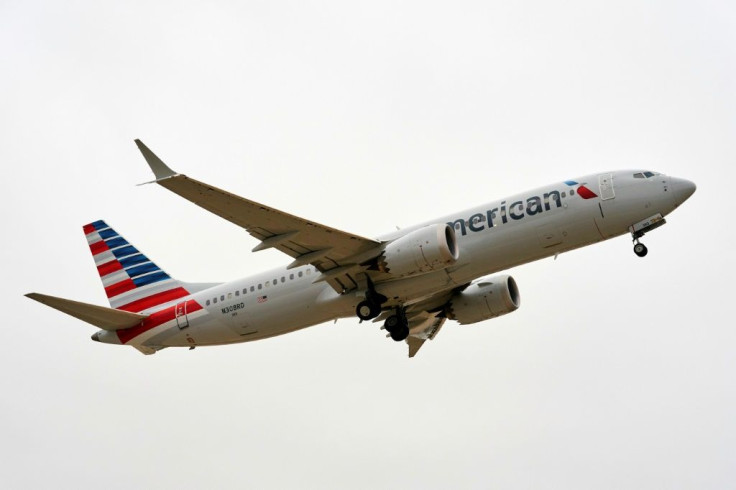American Airlines Courts Danger With Partnership Strategy
Despite being the largest U.S. airline by many metrics, American Airlines (NASDAQ:AAL) had some glaring strategic weaknesses even before the COVID-19 pandemic crushed the industry last year.
First, American is undersized on the West Coast compared to top rivals Delta Air Lines (NYSE:DAL) and United Airlines (NASDAQ:UAL) . Relatedly, American Airlines has a weak position on routes to Asia relative to Delta and (especially) United. Second, American Airlines has a much smaller footprint in New York City -- the largest and most important air travel market in the U.S. -- than its rivals.
Last year, American Airlines announced partnerships with Alaska Air (NYSE:ALK) and JetBlue Airways (NASDAQ:JBLU) to address its shortcomings on the West Coast and in the Northeast, respectively. Yet teaming up with JetBlue, in particular, could backfire in the long run. Let's take a look.
American's West Coast partnership: a win-win
Last February, American Airlines and Alaska Airlines announced that they would work together along the West Coast. American committed to launching long-haul flights from Alaska's main hub in Seattle to Bangalore, India and London. It subsequently announced that it would drop its Los Angeles-Shanghai route in favor of flying from Seattle to Shanghai. The airlines also agreed to expand their codeshare arrangement while adding reciprocal loyalty and lounge benefits.
The American-Alaska partnership should be a win-win for both airlines. Alaska Airlines is strong along the West Coast -- and dominant in the Pacific Northwest -- but has a limited presence in the eastern half of the U.S. By contrast, American Airlines is the market share leader east of the Rockies but much smaller than United and Delta along the West Coast. With most of its hubs spread across the Sun Belt, it is particularly weak in the Pacific Northwest.
These complementary strengths make Alaska and American natural partners. Alaska Airlines can help American Airlines customers get better service to West Coast destinations and provide lots of connecting traffic for long-haul routes from Seattle. Conversely, American Airlines will help Alaska compete for customers in Seattle by offering access to its massive route network.
A different situation in the Northeast
American Airlines faces a different strategic conundrum in the Northeast. With hubs in New York, Philadelphia, and Washington, D.C., it already has a big footprint in the region. But in New York, specifically, United Airlines has a dominant position at Newark International Airport and Delta holds much bigger slot allocations than American at LaGuardia Airport and JFK International Airport. That has left American Airlines in third place in this crucial market, hurting its ability to win corporate contracts.
Last July, American Airlines and JetBlue announced a strategic partnership designed to address those weaknesses. JetBlue carried 36% of domestic traffic at JFK in 2019, making it an ideal partner to supply connecting traffic for existing and new American Airlines long-haul routes.
American Airlines and JetBlue are building out a set of complementary flight offerings in New York (and in Boston) that will help them jointly compete for corporate contracts there. In conjunction with this strategy, JetBlue will add flights in New York using underutilized American Airlines slots.
Supporting a future competitor?
On the surface, American Airlines' Northeast partnership with JetBlue may look similar to its West Coast partnership with Alaska. In each case, a smaller rival is providing connecting traffic for long-haul flights and supplementing American's flight offerings to make them more competitive with those of Delta and United.
But there's one big difference. Whereas Alaska has no interest in expanding into Europe or Asia, JetBlue is months away from launching its first flights to London. By 2025, it could have about two dozen Airbus A321LRs and A321XLRs plying routes from New York and Boston to Europe. JetBlue eventually might use these long-range models to fly deeper into South America, too.
In short, JetBlue is poised to invade many of American Airlines' most important markets over the next decade -- with lower costs (and therefore lower prices). Meanwhile, the airlines' partnership effectively encourages American Airlines customers to try flying JetBlue. If they enjoy the JetBlue experience, those customers might fly American less frequently as JetBlue expands its route network in the coming years.
Despite the long-term risks of the JetBlue partnership, American Airlines may not have had a better alternative. Its weaknesses vis-a-vis Delta and United represent far more pressing concerns than the threat of losing customers to JetBlue years down the road. Nevertheless, investors should recognize that any near-term gains for American Airlines from the JetBlue partnership could come at a long-term cost.

This article originally appeared in the Motley Fool.
Adam Levine-Weinberg owns shares of Alaska Air Group, Delta Air Lines, and JetBlue Airways and is long January 2022 $10 calls on JetBlue Airways and short January 2022 $80 calls on Alaska Air Group. The Motley Fool recommends Alaska Air Group, Delta Air Lines, and JetBlue Airways. The Motley Fool has a disclosure policy.





















